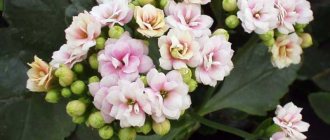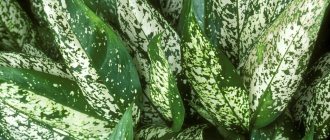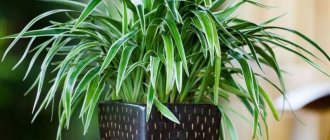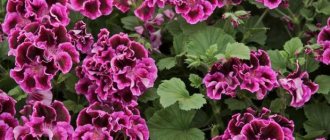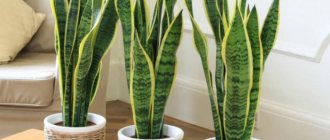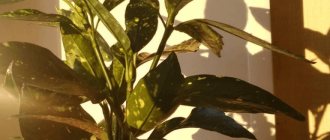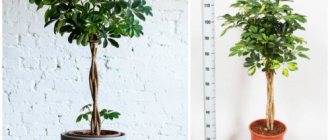Carnivorous plants are amazing representatives of the flora, which have recently become very popular for home keeping. An interesting specimen is Sarracenia. We will discuss this flower and tell you how to grow and maintain such an exotic plant. Let's get started.
Author of the article
Anna Dmitrieva
Gardener with 15 years of experience.
General information
You need to understand what you are going to grow, and only then go to the store for sarracenia. Before practice, a little simple theory.
In nature, the predator is found only in the vast expanses of North America; it is an endemic that is revered in its homeland. But to increase the number of plants, the flower was brought to Ireland, and it took root quite successfully in the local swamps.
The trap leaf looks like a kind of bowl or urn that lures insects; the victim cannot get out of the digestive juice and goes to feed.
Description of species
Since sarracenias are unfamiliar plants to most lovers of our country, we provide descriptions of several of the most common species in cultivation.
Sarracenia alata
The leaves are erect, tubular, usually with a narrow wing, up to 70-90 cm long (in ideal conditions), at the top with a leaf-lid, flat or slightly curved at the edges and covering the mouth of the pitcher.
The leaves are usually light green to yellow, and in bright light the veins at the top of the pitcher turn bright red. The covering leaf is often reddish. Peduncle up to 75 cm tall. The flower is yellow to whitish yellow. The smell is musty. Flowering in early spring. Distributed: Alabama, Texas.
Yellow sarracenia (Sarracenia flava)
The leaves are erect, tubular, with a wide opening, up to 1 m long (in ideal conditions), with a cap leaf at the top. The leaves are light green to yellow, with bright red veins at the top of the pitcher. The peduncle is usually shorter than the leaves. The flower is red. The smell is sweetish. Flowering in early spring. Distributed: Alabama, Georgia, Florida, North and South Carolina.
Ash-leaved Sarracenia (Sarracenia leucophilla)
The leaves are erect, tubular, usually with a narrow wing, up to 90 cm long, with a leaf-lid at the top, strongly corrugated along the edges and covering the mouth of the pitcher. The leaves are usually light green fading to dark green with numerous white spots bordered by red veins at the top of the pitcher. Peduncle up to 60 cm. Distributed: southeast coast of the USA.
Small sarracenia (Sarracenia minor)
The leaves are erect, tubular, up to 80 cm long, curved downwards at the top. The leaves are usually light green with numerous white spots at the top of the pitcher; in the sun, the upper part of the leaves turns red. Peduncle up to 60cm. The flower is small, yellow. Distributed: North and South Carolina, Georgia, Florida.
Variegated Sarracenia (Sarracenia psittacina)
The leaves are creeping, tubular, with a keel in the upper part up to 25 cm, swollen at the top and curved upward. Rosette up to 50 cm in diameter. The leaves are usually light green with numerous white spots, limited by red veins at the top of the pitcher; in the sun the upper part of the leaves turn red. Peduncle up to 25 cm. Red flower. This species prefers waterlogged places and often settles in flooded swamps along with sphagnum moss. Responds very well to fertilizers. If soil moisture decreases, the diameter of the pitchers decreases, and with a severe lack of water, the trapping apparatus is reduced, and the plant ceases to be insectivorous. In nature, it is often found together with S. purpurea and S. leucophilla and forms natural hybrids with them. Distributed: Georgia, Florida, Louisiana, Alabama.
Varieties
The unusual silhouette and bright color attracts not only prey, but also breeders who breed all representatives of this family:
Darlingtonia
The flower somewhat resembles a snake. This representative of the Sarracenia family grows in swamps, and it is very rare to encounter it.
Heliamphora
This subspecies contains 15 separate species, all of which belong to the Sarracenia family. A small and very picturesque representative of the predatory flora, it is popular among fans of the exotic.
Sarracenia
The heroine of our article. About 11 different plants are attributed to this genus, the differences are mainly visual, so our recommendations will be correct for any variety.
The flowers have 2-3 cups for catching prey, but some specific species, like the yellow Sarracenia, can grow over large areas. The height of such a plant does not exceed one meter, the fishing jug reaches a length of about 80 cm, and is located practically at a right angle.
But do not think that each variety is large in size. Some species have cup-shaped leaves of modest dimensions. Many plants are only 40cm in height, there are also more miniature species, 10cm each.
The color of most sarracenias is green; there are purple and yellow specimens. A certain lid is clearly visible above the bowl, which prevents flooding during rain and prevents the insect from leaving the trap.
When hunting, the plant lures small animals with its aroma and bright colors. The nectar attracts the insect and it inadvertently gets inside the bowl. Special fibers covering the walls of the jug from the inside will not allow the prey to fly out, since they are quite hard and interfere with movement outward.
The produced juice gradually digests the weakened prey and thereby feeds the plant. Each victim brings enough nitrogen, magnesium and other elements to continue growth.
Benefits of the plant
The benefits of such a plant for nature are invaluable, since birds often find light food in sarracenia, pecking insects from the bowl. A sufficiently hungry sarracenia can digest even a small frog, but the plant is absolutely not dangerous for humans.
Moreover, there are insects that are able to live and reproduce right inside the flower cup, since they independently produce substances that reduce the influence of plant juices. Such a symbiosis harms the plant, since insects destroy the walls of the flower and prevent it from hunting. At home, this is impossible if the plant is fed correctly.
Sarracenia at home is a fragrant and noble species that requires the right approach. Let's look at caring for the plant, but first, a photo of this wonderful flower.
How to place an order?
Our store offers many types of sarracenia. Fiona, venosa, leucofula - each plant is beautiful in its own way. To get acquainted with all the diversity, use the search bar by entering the word “sarracenia”.
By purchasing an already transplanted plant, you will make caring for the flower as easy as possible until next spring: place it on a south-facing windowsill and water it, preventing the earthen ball from drying out. The cost of sarracenia depends on their size. An adult plant (D 12) will cost more.
Once you have made your choice, add the plant (sarracenia) to your cart and select a delivery and payment method. If you need advice online, leave your number or call us yourself. We'll be happy to help!
How to care for sarracenia
Surely you are interested in the moment of feeding of a predatory species. Let's start with this, because many beginners are afraid to feed their plant insects.
You may be interested in the article: Agapanthus: growing and care at home.
Flower food
Indoor sarracenia does not need to be fed insects on its own. The plant will attract small midges on its own and will digest the resulting prey for quite a long time.
Additional fertilizing can clog the jar and cause it to wilt, so don't put insects inside the Sarracenia cup, as this will only make things worse.
The soil
Now about the soil, since the health of the flower directly depends on the correct soil mixture. In its natural environment, the plant prefers swamps, and we need to replicate such conditions, but on a smaller scale. Required:
- peat;
- perlite;
- sand, preferably the kind for construction purposes.
This soil is as close as possible to swampy soil. The mixing proportions are as follows: 4 parts peat, two parts perlite and a little sand.
Growing Sarracenia step by step:
Watering Sarracenia.
Watering the plant is carried out only in the tray (through the bottom). Water for irrigation should only be distilled (H20), or reverse osmosis (super purified without mineralization). Water from the tap, boiled, frozen, from a regular filter, cooler, etc. cannot be used under any circumstances - the plant will die because of this. Distilled water can be purchased on tap at pharmacies that prepare their own medications. This water can also be found in chemical and medical laboratories. Distilled water is sold in car dealerships and gas stations, but keep in mind that the quality of their water is somewhat worse than pharmacy water, so if possible, try to use pharmacy water. Sarracenia is a swamp plant and does not tolerate dry soil. Don’t be afraid to overwater the plant—it will happily survive it. Be careful not to dry out the plant; it will not tolerate drought. For watering, you need to use high trays that hold a large amount of water. In summer, watering should be intensive. The water level in the pan can reach two-thirds of the height of the pot (ground level in the flowerpot). In the cool season - autumn and spring, watering should be reduced slightly and the tray should be filled to one third of the pot. In winter, during the dormant period, moderate watering as the earth's coma dries out. Sometimes you can spray the leaves of Sarracenia on top from a spray bottle with distilled water, just a little, so that this is not considered watering from above. In summer it is allowed once a day, in the cool season - once every 5 days, but this is not a mandatory procedure at all.
Soil for the carnivorous plant Sarracenia.
Peat: perlite (1:1 or 2:1); pH 3.0-4.0. The substrate should be prepared on the basis of acidic high peat with an acidity of 3.0-4.0 pH. Before preparing the substrate, perlite must be soaked in distilled water for one and a half to two weeks, draining and replacing the water 3-4 times a week. The substrate is prepared in a ratio of 2:1 or 1:1 (acidic peat: perlite). Perlite allows water and air to pass through very well and also prevents mold from growing. If you do not have the opportunity to prepare such a substrate yourself, you can purchase it from us. You can also add dry sphagnum to the substrate. Sphagnum will help the substrate retain moisture longer and prevent drying out, and it also acts as an antiseptic, disinfecting the soil.
Flowerpot for Sarracenia.
To grow Sarracenia, you should only use a plastic pot or glass flowerpot with holes in the bottom so that water can circulate easily. Planting plants in ceramic or clay pots is prohibited. The basis of the substrate for Sarracenia is high acidic peat. When ceramics interact with such peat, they release harmful salts that have a very detrimental effect on the plant. Therefore, use only plastic or glass pots. The diameter of the plastic pot is from 9-11 cm or more. Adult Sarracenia should be grown in pots of large diameters, because... the roots grow very much, and it produces basal children, as a result a very lush bush can grow.
Illumination of Sarracenia.
Sarracenia loves sunlight very much - direct sunlight. The more bright direct rays, the more beautiful the color. Therefore, the flower pot should be placed on the south window, south balcony, on the south side of the house. With a lack of light, the plant suffers, the leaves of Sarracenia may grow very narrow, flimsy, deformed, the jugs may not form at all, because it will be depleted from lack of solar energy. The more sunlight your plant gets, the better it will be for it. At a minimum, the plant should receive 5-6 hours of direct sunlight per day and the rest of the daylight hours should be diffused bright light. But the more time the plant is in direct sunlight, the better. Maximum – 16 hours of bright light. If it is not possible to grow the plant on the south side, then you can supplement it with very bright lamps with a power of at least 58 W - full daylight hours - 12-16 hours with a lamp, 8 hours at night, without a lamp. Carnivorous plants do not really like being rotated around an axis, so it is advisable to make some kind of mark on the pot regarding the cardinal direction and try to always adhere to this direction.
Feeding Sarracenia.
For any carnivorous plants, insects are fertilizers. The carnivorous Sarracenia is a very voracious plant and can eat as many insects as can fit into each pitcher leaf. For Sarracenia to live and develop well, it does not need to eat too many insects, only 3-4 insects per year. If you want to feed the plant, then Sarracenia can be fed constantly. Prey is usually digested from 2 days to a month. It depends on the size and density of the insect. The plant from the insect sucks out the necessary nutrients, and the chitin remains.
Humidity and air temperature for Sarracenia.
Humidity is 45-70%, as for most indoor plants. Home conditions are acceptable. Air temperature in summer is 25-35 °C, in winter +2…+7 °C. Needs a period of rest (wintering).
Wintering of Sarracenia.
Sarracenia requires wintering (rest period). Sarracenia is a plant of a temperate climate, so the change of seasons is inherent in it by nature. Without this dormant period, the plant will be weak and may die. It is best for wintering to take place on the shortest sunny days (late autumn-winter). You can also navigate by the weather - with the arrival of cold weather, you can prepare for the winter. Until this moment, all these plants can live wonderfully outdoors all season long (outside in the yard, on the balcony, on the window). When the temperature drops to +7...+5, and even light frosts on the soil can occur at night, it means it’s time to winter. Usually this is November. Before placing the plant in the cellar or refrigerator, you should cut off the water lily leaves at a distance of 2 - 3 cm from the rhizome, after which the plant is treated with a fungicide to prevent mold from forming. If the plant is wintered together with the jugs, then all the old jugs can be cut off in the spring - after wintering. There is no need to spare the leaves and leave them uncut, since you won’t expect much beauty from them next year, and in any case, with the beginning of the new growing season, with the arrival of spring and warmth, the plant will produce many new leaves. “Fitosporin M paste” or “Fundazol” is very suitable for processing. To do this, just spray the plant intensively with a spray bottle. A pot with a plant without a tray can be packed in a plastic bag, zip bag or plastic container; small holes must be left or made to allow some oxygen to flow in. About once every 2 weeks you need to check the soil for moisture and the absence of mold. The substrate in the pot should be slightly moist. Do not dry out under any circumstances. If there is not enough moisture, add a little water from above directly under the root. For wintering, plants can be placed in a refrigerator, in a cellar, basement, on a glazed balcony, etc. The main condition for wintering is a low temperature ranging from +2 to +7 degrees. Higher temperatures are not suitable, since at high temperatures the plant’s vegetation does not slow down and it does not fully rest. The refrigerator is usually a stable +5, so this is the ideal temperature. Sarracenia does not need lighting at all during wintering. The most important thing for a plant is the health of the rhizome (rhizome). As soon as it gets into the warmth and good lighting, it will begin to bloom new jugs. The wintering period for a baby is 2 months, for a teenager - 3 months, an adult plant overwinters for 3.5 - 4 months. Exit from wintering - as soon as the plants have been at rest for the required period, we take them out into a warm place, put them in a pan of water in a bright light, and continue to care for them as usual. There is an exception to the rule of Sarracenia Psittacina - it does not need wintering.
Transplanting Sarracenia.
The carnivorous plant must be replanted once a year. It is most convenient to do this immediately after a period of rest. Replanting is needed to renew the soil, as over time it loses acidity. If the plant has already outgrown its pot, then you need to increase the size of the pot. If over the past year the plant has produced babies, then you can plant them in separate pots.
Blooming Sarracenia.
In spring, mature Sarracenia blooms. Sarracenia flowers are solitary, on a long peduncle, up to 10 cm in diameter; depending on the type, their color can be red, violet, purple or yellowish. Flowering takes too much energy, therefore, sometimes an adult rhizome may release a peduncle first in the spring, and if it is not cut off immediately, this will slow down the formation of new trapping jugs.
Diseases in Sarracenia.
Sarracenia is constantly in a humid environment, so it is susceptible to various types of rot and fungi. Means for treating plants against parasites and diseases: - Fitosporin M paste - a biofungicide for protecting plants from fungal and bacterial diseases. — Fundazol is a fungicide and disinfectant with a broad spectrum of action against a large number of fungal diseases. — Aktara is an insecticide with enteric contact action. Very effective against small insects that have settled in the substrate.
If you grow Sarracenia in accordance with the above conditions, you will have strong, healthy plants that will delight you for many years. With proper care, Sarracenia lives for 20-30 years and during this time multiplies repeatedly.
Flower propagation
Most likely, you will like sarracenia so much that you will rush to get a second flower, or give the plant to your loved ones. To grow, you need to take several seeds from an adult plant. The seeds are planted in peat until the first shoots, then the young sarracenia is planted in the already described soil and cared for in the usual manner.
Seeds must be stratified, that is, kept at low temperatures. This procedure can last for months, but the result of the efforts will fully pay off the expectations.
Some people prefer to propagate their flowers by planting parts from adult plants in the ground. This technique has the right to life, but keep in mind that parts can only be cut from a sufficiently strong plant. A weak individual is unlikely to survive such a procedure.
Growing Sarracenia from seeds
Plant seeds are very small and special care is required when working with them.
Sarracenia seeds require cold stratification for 4-6 weeks (temperature +2°...+7°C). The seeds are placed on a cotton pad or napkin soaked in a fungicide solution, placed in a closed container or zip bag, tightly closed, so that the humidity is as high as possible and the seeds are in a humid environment. Place in the refrigerator and make sure that no mold appears; periodically add a weak solution of fungicide, or you can spray the container with a spray bottle to prevent mold fungi. During this period, the seeds do not change in appearance, do not germinate or swell. At the end of stratification, the seeds must be placed on the surface of the substrate in a mini-greenhouse, previously spilled with a fungicide. Do not bury the seeds from above. Close the mini-greenhouse with a lid and place it in a tray with distilled water on a southern windowsill, or under a phytolamp (minimum 36 Watt) for 14-16 hours/day. They germinate at a temperature of 20-25 °C, with high air humidity and good lighting in 4 - 6 weeks; germination can take up to several months. You only need to water into the tray. Plants are swampy, so it is necessary that there is always a little water in the pan, about 1 -1.5 cm. After the seedlings have reached a size of 1-2 cm, they must be transplanted into separate pots. For transplantation, you can use tweezers and a toothpick.
Pests of Sarracenia
As you remember, some insects can cause significant damage to a flower. In particular, these are aphids, mites and other pests. It is not difficult to fight them; for this, folk remedies such as garlic solution and other mixtures are used. You need to be careful with pesticides; the delicate structure of the predator can be damaged by the chemicals.
In conclusion, we would like to wish you good luck in keeping your sarracenia. Don't worry, the plant is no different from other indoor varieties, and can also surprise its owners. Good luck!
Problems and diseases
A plant that has been provided with proper care is practically not susceptible to disease. It can become a preventive trap for parasitic insects and protect all indoor flowers from pest invasion. But if mistakes were made in the care, then the beautiful sissy will demonstrate all her capriciousness.
The main difficulty in controlling pests or diseases is the ban on spraying. No substances should get inside the jug: neither folk remedies, nor insecticides. Therefore, the spraying procedure is replaced by wiping. The table contains descriptions of the main plant diseases.
Table - Problems of sarracenia and methods of treating predators
| Symptoms of the problem | Cause | How to fix |
| — The plant stops growing; - a gray coating appears on the leaf plates | — Gray rot | — Cut off all damaged areas; — arrange daily ventilation of the room (but not a draft!); - treat the plant with “Fitosporin M” or “Fundazol” |
| — Sarracenia begins to wither; - small pests are visible on the plant | — Aphids | — Increase the humidity in the room; - lower the temperature; - hang Velcro to catch insects; - remove visible pests; - trim damaged areas; - gently wipe the sheets with soapy water; — in case of severe damage, use insecticides: “Fitosporin”, “Aktara”; - if the roots are affected by the mealybug, replant in new disinfected soil and remove the affected roots |
| — Deterioration in the appearance and growth of the plant is accompanied by the appearance of lumps of cotton wool on the leaf | — Mealybug | |
| — Leaf blades turn yellow and dry out; - sarracenia is entangled in a thin web | — Spider mite |
To ensure that caring for sarracenia in a pot is not accompanied by the appearance of problems and diseases, carefully monitor the condition of the green predator. Sarracenia will definitely let you know about mistakes in care. Yellowing of the foliage indicates a lack of light or excess potassium in the soil. And the lack of flowering and drying out may indicate improper wintering or insufficient watering. But if the roots or leaves begin to rot, it means that the watering was excessive. Immediately replant the sarracenia and moderate soil moisture.
